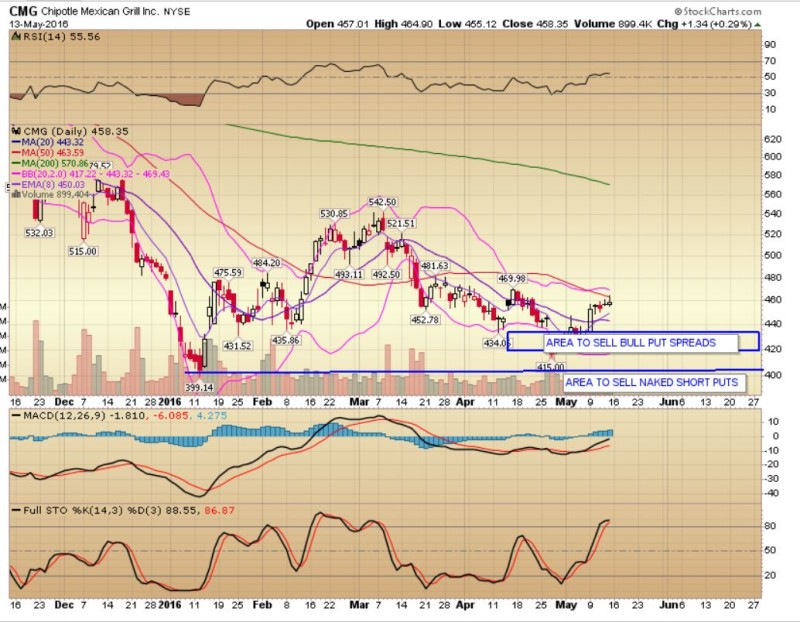Interested in trading for income? In this three-part series for advanced traders, I will share with you the top methods I use to generate monthly returns for my clients. In my first post, I talked about directional and non directional trades. In my second, I discussed covered calls. In this third one, I’m looking at how to capture option premium. The two ideas we’ll focus on are the use of credit spreads on equities and the proper use of cash-backed short puts.
While reading this article, please keep in mind the objective: to capture premium that is way out of the money. Think of it as picking up dollars that someone left lying on the ground while the rest of the gang ran off to Vegas to play high stakes poker. Key elements to make this strategy work are to stay way out of the money on your options selections and properly size each trade to fit within your portfolio and risk parameters.
Let’s take a look at the two core strategies I use to capture premium and produce income in my clients’ portfolios.
Cash-Backed Puts
There are two reasons to sell cash backed puts or “naked short puts.” One is to try to gain entry into a stock at a certain price level. In this instance you sell the put at the strike of your choice, take in a credit for the premium and wait to see if you are assigned the stock. Once you are assigned the stock, you can begin writing calls against it (as described in my last article).
The second reason is to sell a way out of the money put with the intent of capturing the premium and never (hopefully) taking assignment of the stock. When selecting your option, look at the chart and determine the last low.
Let’s use the Chipotle (CMG) chart above as an example. (Full disclosure: I am long CMG via calls and various bull put spreads.)
The stable base appears to be $400, so I would look at the options chains to determine what premium I can get for selling a front month. I’d then work my way up the options chain month by month to see how much premium I can get while staying as close to the $400 area as possible. In this instance, I have to go out to September 410’s. Doing the math, I am tying up $40,000 in margin while taking in a $1,490 credit, which gives me a 4% return on my money. This rate of return tells me two things: 1) find a lower priced stock, and 2) look to trade CMG using a different strategy (keep reading). I ask myself, “Am I OK with holding 100 shares of CMG stock at $410?” If not, this strategy is not for me.
The ideal setup is to find a stock that has made a recent relative low and proven that the low is going to hold. I’d then sell the put while the volatility is still high. Remember – we like to sell high volatility and buy low volatility.
It is very important to adhere to position sizing when selling naked short puts. Never sell more than you would mind taking assignment on at the strike you sell. Remember that you can be “put” the stock at any time, not just at the monthly expiry. Always assume you could be put the stock at any time.
Bull Put Spreads
A bull put spread is a bullish strategy that provides profits when the underlying stock stays stagnant or rises. When written as a spread, it has a clearly defined potential gain and loss. The gain is the premium collected on the trade, and the total risk is the spread less the credit collected. To further ratchet down risk, I suggest the use of stops (100% of the premium collected). So for our CMG play, if I take in a credit of $3 I will stop out at $6.
Staying with CMG: We have already sold short one put. To create a spread, we simply buy one long put, which creates a vertical bull put spread. This will alleviate the huge margin requirement to trade this stock via the short put method, and it will still allow us to stay within our trading parameters. When writing bull put spreads, you sell the higher strike put and buy the lower strike put, all with the intent of staying out of the money and as close to front month as you can get (time decay is your friend on this strategy).
For CMG, I can sell the May monthly 440/420 (sell the 440 put and buy the 420 put) for a credit of $1.32. Doing the math, we take the premium 132/2000 (margin used) = 7% return on your money in 5 trading days. All we are concerned about is that CMG stays above $440 by the close next Friday.
Now I’ll look at the next expiry of May 27. I can sell the same bull put spread for $2.42, which gives me a 12% return on my money. 242/2000 = 12% (assuming I hold the spread down to zero through expiration). Selling a 10 lot of these would bring in an income of $1,320 for the first trade and $2,420 for the second trade – not too shabby for such a short timeframe.
In either trade we use to capture option premium (the naked short put or the bull put spread), I would look to exit at an 80% profit target.
As always, respect position sizes and don’t overload your portfolio with one name. The market is a very fickle environment. Even trades that seem super easy can turn on a dime, so trade nimbly and carefully.
If you would like more information on my portfolio management services please contact me at suz at investsps dot com.
Copyright: mblach / 123RF Stock Photo





















